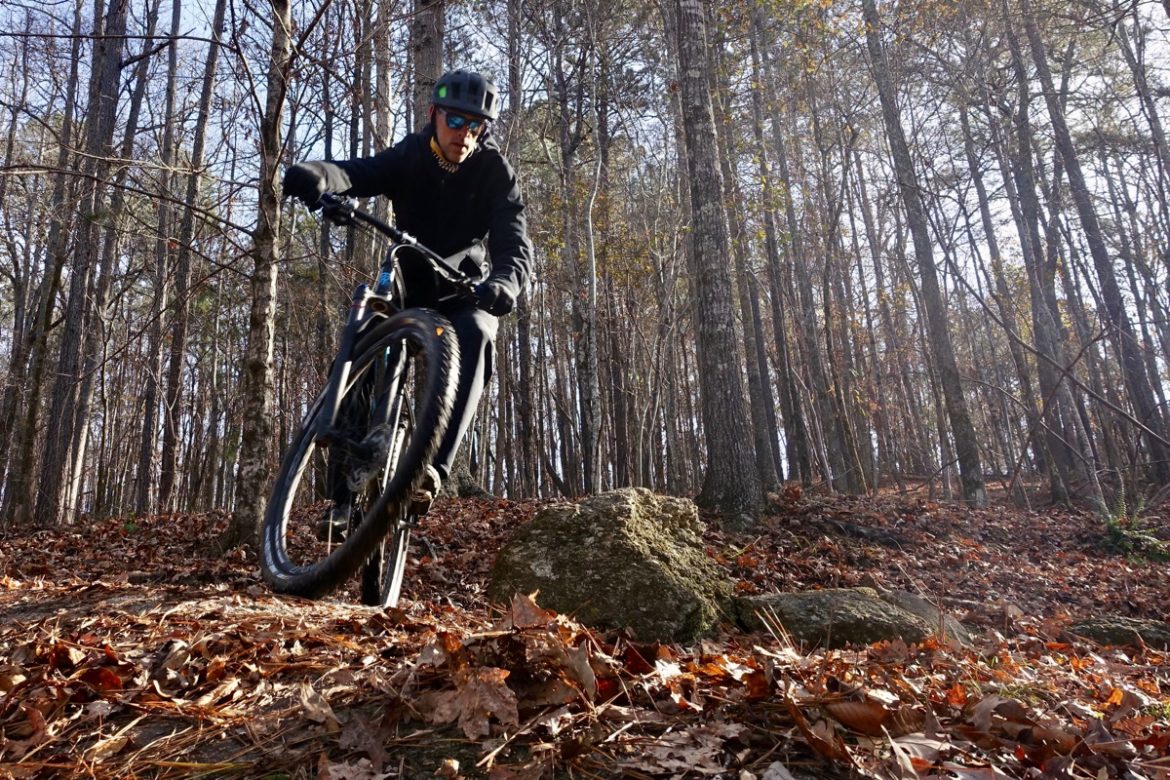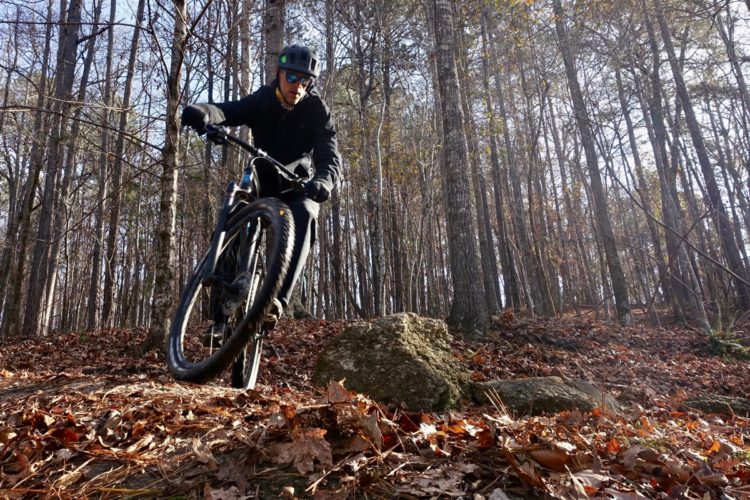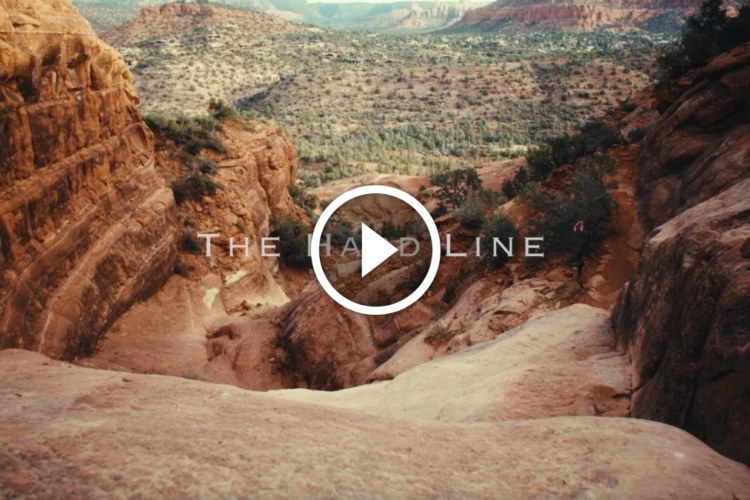
In 2012, I decided I had aged out of riding hardtail mountain bikes.
At the time I was training for my first (and still last) 100-mile mountain bike race, and I had two 29er bikes in my stable: an aluminum, Redline d660 hardtail and a carbon-fiber, Santa Cruz Tallboy with 100mm of rear travel. Initially I wasn’t sure which bike I would ride in the race, but as the date got closer, and my training rides got longer, I decided the hardtail was just too uncomfortable. I felt every single bump in the trail, and on rocky, rooty descents I couldn’t hold a line without slowing my roll to a crawl. But plenty of folks were riding 29er hardtails, so clearly this was a personal problem. To me, the sore back, arms, and shoulders proved I was just getting too old for riding hardtail mountain bikes.
The thing is, hardtail specs in the early 10s wouldn’t even pass for a gravel bike today. My Redline had a 71° head tube angle and was rolling on 2.1″ tires, and the wheels likely had an internal rim width in the teens. The bike did have a 100mm travel fork, but no dropper post so descending was all kinds of sketchy. Is it any wonder I swore off hardtails?
That anyone could ride a hardtail bike fast through technical terrain, and for long periods of time prior to 2015 is a testament to sheer strength of will. Sure, it could be done but it’s hard to imagine any of us were having as much fun as the folks on full suspension bikes were in those days.
The switch

Like all changes in the bike world, hardtails have seen incremental, but steady improvements over the years. As I sat on the sidelines, dropper posts came into wider use, rims and tires grew wider, and geometry got more relaxed. People even started talking about hardcore hardtails which sounded edgy and cool, but at the time I was still convinced I was too old for that nonsense. Hardtails were for kids stuck with limited budgets yet conveniently blessed with well-oiled joints and stretchy rubber bands for ligaments.
In 2018 my curiosity got the best of me, and I decided to see what these hardcore hardtails were all about. If anything they seemed a novelty, and I’m a sucker for trying weird bike stuff. I started with a long term test of the Marin San Quentin with a crazy-slack-for-a-hardtail 65° head tube angle and 130mm of front suspension, and it didn’t suck. I followed that up with an even longer-term test of the 2019 Ritchey Ultra, more of a normcore hardtail as far as geometry goes, but with the ability to run 2.4″ tires, a 120mm fork, and dropper post routing. I ended up riding the Ritchey in Pisgah, on trails I was convinced required loads of rear squish to properly enjoy, and I had a blast. It was as if I was born again.
Looking at today’s hardtails, it’s no wonder the bikes are so much more comfortable and capable than in the old days. The biggest drawback compared to full suspension bikes, as any rider can plainly see, is the rear end on a hardtail tends to bounce around, leading to discomfort and to a lack of tracking and control at speed.

In my mind dropper posts are easily in the top three when it comes to mountain bike innovations, allowing riders to get the seat out of the way when it’s time to descend. Without one, hardtail riders found themselves bumped and jostled pretty much the entire ride. In my experience, getting the seat out of the way takes a lot of the sting out of the ride.
Larger-volume tires, and the ability to run lower pressures thanks to tubeless tire improvements, smooths the trail as well. Of course all bikes have benefitted from improved tires and wider rims, but on hardtails the difference is much more noticeable and appreciated.
Fatter tires are no substitute for suspension, and even on hardtails many have found there’s limited return to running tires much wider than two and a half inches or so. A decade ago, hardtails generally shipped with 100mm-travel forks, but today the starting point seems to be closer to 120mm. This makes going faster, jumping higher, and smashing through bigger obstacles much easier on today’s hardtail bikes.

Another development — or perhaps more accurately, relaxing of constraints — has been the deemphasis of low weights when it comes to bikes. For hardtails, frame material has a noticeable effect on ride quality, and most riders tend to agree that steel hardtails offer a more forgiving ride feel compared to other materials like aluminum and carbon. But aluminum and carbon hardtail frames are generally much lighter, so brands favored these materials for hardtails a decade ago despite their often inferior ride quality. Today, hardtail buyers are stoked on steel, even if it means pushing around a few more grams. Compared to riding my old Redline, which felt like striking a fastball with an aluminum bat, rolling on a bike like the Ritchey Ultra is more akin to the satisfying smack of wood on leather.
Thankfully one thing that hasn’t changed is a hardtail bike can climb the trail like a goat. The climbing efficiency gap between hardtail and full-suspension bikes has certainly narrowed over the years, but only because full-suspension bikes are getting better, not because updated geometry or parts upgrades have made hardtails less effective climbers.
Of course hardtails will never be the bike for every rider or every application. As hardcore as a hardtail may be, it’s never going to be competitive in a gravity race for example. But for many of us who enjoy riding trails, whether it be all night or for days at a time, hardtails are worth a look today… even a second one.





















17 Comments
Feb 17, 2021
Feb 18, 2021
800mm bar with 10° back, 8° up for that trialsy feel and a 70mm stem to keep the bar in front and not under.
Feb 17, 2021
Feb 18, 2021
Feb 16, 2021
Dec 8, 2021
In the 2000s I purchased a Chromoly On One Inbred hardtail with a rigid fork and rode Whistler, Fruita, Washington state trails and all over the upper Midwest on that thing. I jumped it, rode gnarly descents....it didn't matter. The key to that particular frame was it was a 16" frame with a 23 inch top tube so I could run a 50mm stem long before that became the norm. Well now 35mm seems to be the norm.
Today I have a Salsa Rustler full suspension and an Esker Hayduke hardtail with a 140mm fork. I love them both, but nothing beats a good hardtail! The best part about the Hayduke is that it's a 67.6 degree head angle.....so right in the sweet spot. Super slack 65 or less head angles suck on any trail that isn't pointing down hill with you going over 30 MPH!
I grew up riding BMX and I still ride BMX. So maybe that's the difference here. But this article is obviously the experience of one rider. BTW, I am 54 and not slowing down yet.....;-)
Feb 16, 2021
Feb 17, 2021
Feb 18, 2021
Feb 17, 2021
Feb 16, 2021
Feb 18, 2021
They are a lot lighter as well, so climbing is easier. But man... I hate when the rear starts bouncing and gets sideways doing long decents. Again... it's a challenge and its not easy.
Feb 16, 2021
Today's hardware is so far ahead in ride quality and performance.
Mar 3, 2021
2010 Santa Cruz Chameleon running 160mm Fox 36s, 67 degree head angle, 330mm BB height (by rotating eccentric), 2.5" tyres on Mavic 723s, 750mm bars, 203mm brakes and a dropper by 2011/12. Then later 1 by 11 upgrade.
Rode all enduro trails and hit more than many on dual suspension bikes.
It still rides very well.
Mar 3, 2021
Mar 3, 2021
Rode this thing silly for many years, ditched my dual suspension enduro and had huge fun on it and my DH rig.
Still take it out from time to time but enjoying the range extension of my Kenevo too much. Had that since 2017.
Feb 16, 2021
Do you have a guess what's next for hardtails Jeff?